Want to boost your sales dramatically? The secret is in designing an effective sales funnel that converts visitors into dedicated customers. This guide will walk you through the core elements needed for building the most successful sales funnels.
It also provides practical, result-oriented advice. Understand your target market, perfect your landing pages, and excel at lead nurturing. Follow these expert tips to elevate your sales approach and see your conversion rates climb. Let’s dive in and create a funnel that attracts, converts, and keeps your perfect customers coming back!
>>> MORE: Brevo Landing Page Review
1. OptimizePress
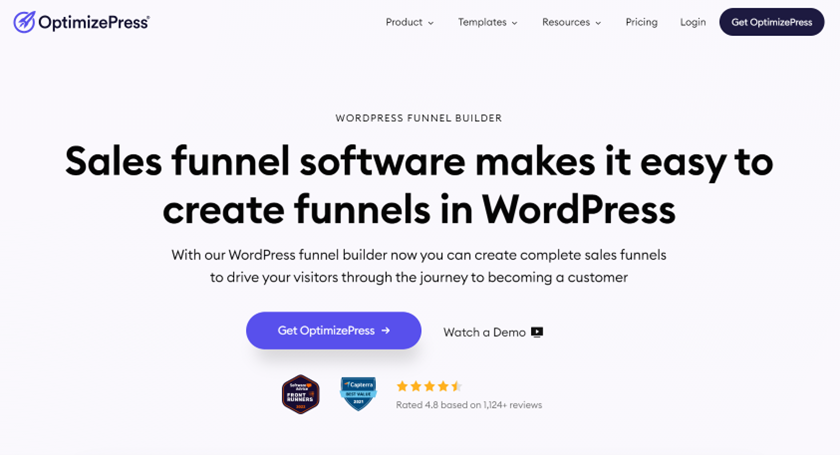
OptimizePress is a WordPress plugin designed for creating landing pages, sales pages, and membership portals.
- Offers a user-friendly drag-and-drop interface for creating landing pages, sales funnels, and marketing websites, making it accessible even for beginners.
- Provides a wide selection of pre-made templates that are customizable and responsive, allowing for easy creation of visually appealing and effective pages
- Offers superfast, SEO-optimized page structures, enabling users to benefit from free Google search traffic.
- Faces challenges related to compatibility, customer support, and potential content lock-in issues.
- Templates: Over 100 templates to quickly start creating pages. They are customizable, so you can adjust them to fit your brand and message.
- Premium Integrations: Includes over 20 integrations with tools like Zapier, allowing you to connect OptimizePress with other marketing tools and streamline your workflow.
- Unlimited Pages: You can create as many landing pages, sales pages, or membership pages as you need without any restrictions.
- Leads & Traffic: There’s no limit on the number of leads you can capture or the amount of traffic you can receive, which is great for growing businesses.
- Stock Images: Access to a library of over 1 million royalty-free images to use on your site, saving you from purchasing images elsewhere.
2. Basecamp
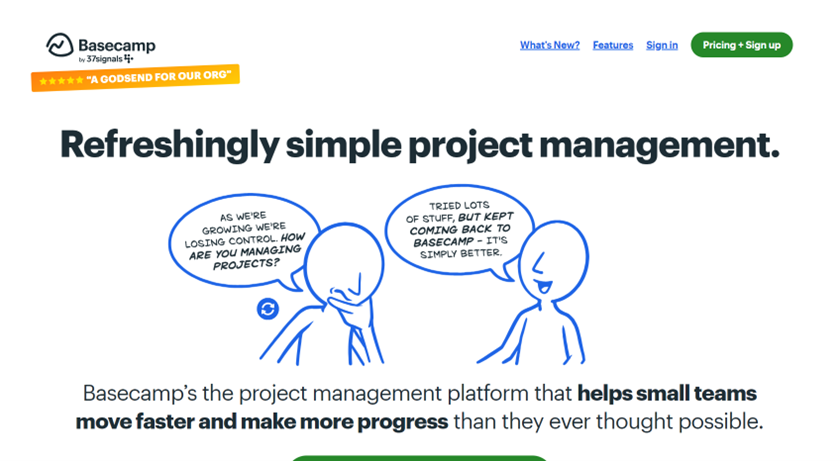
Basecamp is a project management and team collaboration tool that simplifies communication, organization, and task tracking for businesses.
- Combines various tools in one place.
- Has an Intuitive interface and is easy to use.
- Gives clients some level of access to projects.
- Comes with basic reporting features compared to some competitors.
- Lacks built-in time tracking functionality.
- To-do Lists: Create tasks, assign them to team members, set due dates, and track progress. This helps keep everyone on the same page and ensures tasks are completed on time.
- Message Boards: A centralized place for discussions on project-related topics, replacing lengthy email threads and keeping all communication in one spot.
- Schedules: Visualize project timelines, track important milestones and deadlines. This feature helps with planning and ensures that everyone is aware of key dates.
- Docs & Files: A single place to store all project documents and files, making it easy for team members to find and share information.
- Group Chat (Campfires): Real-time chat for quick discussions and immediate communication. There are also private messages (Pings) for one-on-one conversations.
3. Zendesk

Zendesk is a customer service platform designed to improve customer support experiences.
- Provides a unified interface for managing customer interactions across multiple channels.
- Streamlines internal support processes.
- Reduces the number of support tickets by allowing customers to find answers themselves.
- Comes at an expensive rate, especially for small businesses or those requiring advanced features.
- Lacks some advanced automation capabilities found in other platforms.
- Does not provide generative AI for deflection or GPT-powered responses on live chat.
- Live Chat: Engage with customers in real time, offering immediate assistance.
- Knowledge Base: Create a self-help area with articles and FAQs to empower customers to solve issues on their own.
- Ticketing System: Organize and prioritize customer inquiries, ensuring nothing falls through the cracks.
- Customer Support Analytics: Gain insights into customer interactions, identify trends, and improve service quality.
- Multi-Channel Support: Manage communications across email, chat, social media, and more in one unified workspace.
4. Twilio
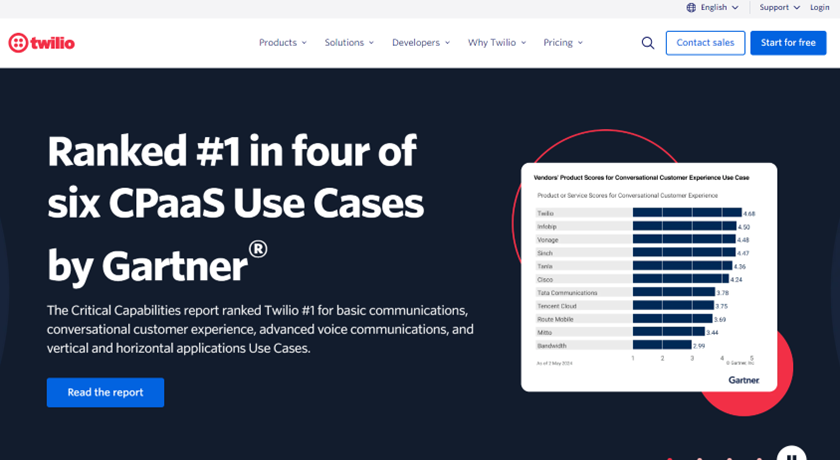
Twilio is a cloud communications platform that allows developers to integrate various communication methods such as voice, text, chat, and video into their applications.
- Offers a wide range of communication APIs.
- Handles large volumes of messages and calls.
- Supports international numbers and languages.
- Involves some complexity which can be challenging for beginners to set up.
- Comes at a higher price compared to some competitors, especially at scale.
- Relies on internet connectivity, which can be an issue in areas with poor service.
- Text Messaging: Enables sending texts across the globe.
- Call Management: Offers tools to handle voice calls via the cloud.
- Instant Messaging: Helps build chat features for live communication.
- Video Conferencing: Provides tools for embedding live video in apps.
- SIP Trunking: Bridges SIP-based systems with public telephone networks.
- Custom Contact Center: Offers a customizable platform for customer service operations.
5. Netflix
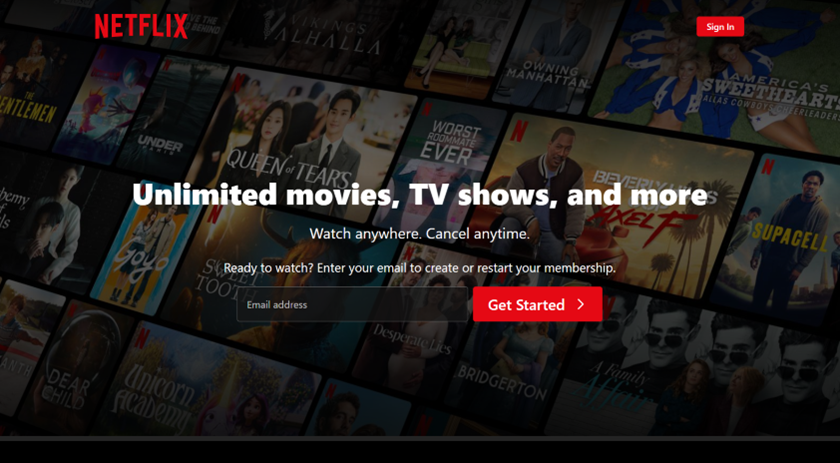
Netflix is a streaming service offering a wide variety of TV shows, movies, anime, documentaries, and more on thousands of internet-connected devices.
- Offers a broad selection of content across various genres.
- Produces high-quality original shows and movies.
- Enhances viewing with personalized recommendations and user profiles.
- Removes titles occasionally due to licensing changes.
- Charges more for higher streaming quality through pricier plans.
- Requires a consistent internet connection for use.
- Streaming Library: Access to a wide range of movies, TV shows, and documentaries.
- Netflix Originals: Exclusive original content not available elsewhere.
- Multiple Profiles: Allows different users to have their own personalized space.
- Download Option: Ability to download certain titles for offline viewing.
- Multiple Devices: Watch on smartphones, tablets, smart TVs, laptops, and streaming devices.
- User Interface: Easy navigation with search functionality and curated categories.
6. HelpScout
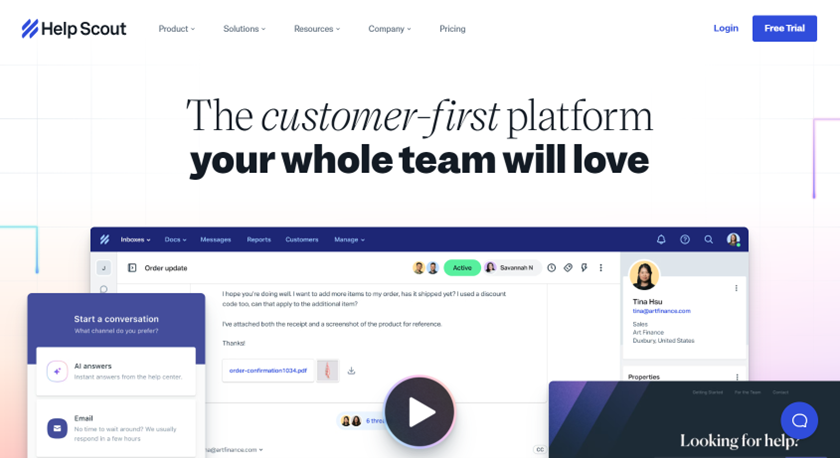
HelpScout is a customer service and support software that provides help desk and customer support features.
- Has a clean interface that’s easy to navigate.
- Offers excellent customer service with quick response times.
- Provides a good set of features like shared inboxes, reporting, and automation tools.
- Integrates well with other tools and services.
- Experiences limitations in customizing the software to fit specific workflows.
- Does not have a native live chat feature; relies on integrations for this functionality.
- Shared Inboxes: Allows teams to manage all customer communication in one place.
- Automation: Workflows can automate repetitive tasks and organize conversations.
- Knowledge Base: Create a self-service resource for customers to find answers quickly.
- Reporting and Analytics: Provides insights into customer satisfaction and team performance.
- Customer Profiles: Gives a complete view of customer interactions across all channels.
- Email Integration: Seamlessly integrates with email services for efficient communication.
7. MailChimp
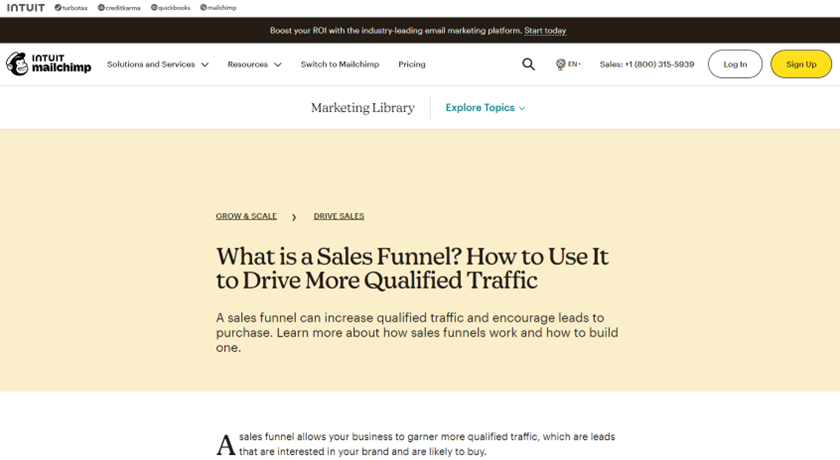
Mailchimp is an all-in-one marketing platform offering email campaigns, automation, analytics, and integrations to streamline digital marketing efforts.
- Offers a user-friendly interface with drag-and-drop email builders.
- Provides a range of templates and customization options for campaigns.
- Includes advanced automation features for targeted email sequences.
- Integrates seamlessly with numerous third-party applications.
- Increases in cost as your mailing list grows, which can be significant for large audiences.
- Requires a learning curve to fully utilize its advanced marketing features.
- Limits the number of templates available on the free plan.
- Email Campaigns: Create custom emails from scratch or use pre-designed templates. Personalize content based on your audience’s behavior and preferences.
- Automation: Set up automated emails triggered by specific actions, like welcome emails for new subscribers or follow-up emails after a purchase.
- Audience Management: Segment your audience into groups based on shared characteristics to send more targeted campaigns.
- Analytics and Reports: Track the performance of your campaigns with metrics like open rates, click rates, and subscriber activity.
- Integrations: Connect Mailchimp with other tools you use, such as Shopify, WordPress, or Salesforce, to streamline your workflow.
- Transactional Emails: Send automated one-to-one emails like order confirmations or password resets.
>>> PRO TIPS : Best CRM for Healthcare Industry
Overview of Most Successful Sales Funnels

Consider what makes the sales funnels for these successful companies tick. OptimizePress builds stunning landing pages quickly, capturing leads with high-converting templates and automated email sequences.
- Basecamp hooks users with a free trial, using onboarding emails to convert them to subscriptions.
- Zendesk’s freemium model engages users with in-app tips and personalized onboarding to upgrade to paid plans.
- Twilio offers clear API documentation and free credits for testing, encouraging scaling usage by demonstrating value.
- Netflix attracts users with a free trial and keeps them hooked with personalized recommendations and original content.
- HelpScout gives potential customers a trial period, using targeted follow-ups and case studies to showcase the platform’s impact.
- Mailchimp starts users for free, gradually introducing premium features to enhance email marketing efforts and drive upgrades.
How to Choose the Most Successful Sales Funnels
To select the most successful sales funnel, focus on understanding your target audience first. Identify their needs and pain points. Research competitors’ strategies and see what works in your industry. Start with a simple, user-friendly funnel that captures leads effectively. Offer free trials or valuable content to attract users.
Use automated follow-up emails to nurture leads. Track and analyze your funnel’s performance, adjusting tactics based on data. Always provide clear value and make it easy for customers to take the next step. Test different approaches to find what resonates best with your audience, ensuring continuous optimization for maximum success.
Pros and Cons of Most Successful Sales Funnels
Pros
- Streamlines the customer journey from awareness to purchase.
- Increases efficiency by automating parts of the sales process.
- Optimizes marketing efforts through targeted campaigns and A/B testing.
- Enhances customer relationships with personalized follow-ups and offers.
Cons
- Requires continuous testing and optimization to maintain effectiveness.
- Demands significant upfront investment in time and resources to set up.
- Risks potential loss of leads if not properly maintained or updated.
What to Watch Out For

When choosing a sales funnel, watch out for these key pitfalls. Avoid overly complex funnels that confuse potential customers; simplicity is crucial. Ensure your funnel aligns with your target audience’s needs and behaviors. Be wary of neglecting follow-up; automated, personalized emails are vital.
Don’t ignore data; continuously analyze performance and adjust accordingly. Watch out for poor user experience; seamless navigation keeps prospects engaged. Avoid generic content; tailor your messaging to address specific pain points. Finally, don’t overlook mobile optimization; many users will access your funnel on their phones. By staying vigilant about these factors, you’ll create a more effective and successful sales funnel.
Pro Tips
- Start by deeply understanding your target audience. Research their needs, preferences, and pain points.
- Offer valuable content or resources in exchange for contact information. E-books, webinars, and free trials can attract potential leads effectively.
- Ensure your landing pages are clear, concise, and visually appealing. Use strong headlines, compelling visuals, and clear calls to action to encourage conversions.
- Use action-oriented language that encourages immediate response.
- Divide your email list into segments based on behavior, interests, and demographics. This allows you to send highly targeted and relevant content.
- Develop a series of automated emails to educate, inform, and build trust with your leads. Provide value and gradually guide them toward making a purchase.
- Incorporate testimonials, reviews, and case studies into your funnel. Social proof builds credibility and reassures potential customers.
Recap
To explore the strategies behind the Most Successful Sales Funnels! Understand how top marketers create compelling offers that achieve high conversion rates. Begin with an engaging introduction to immediately capture attention. Lead prospects through key stages: awareness, interest, decision-making, and action.
Utilize effective landing pages and emails to nurture leads efficiently. Embrace the potential of upselling and downselling to maximize sales opportunities. Continuously analyze, adjust, and refine your approach to continually improve conversion rates. Follow these steps to witness significant growth in your sales funnel’s performance!













